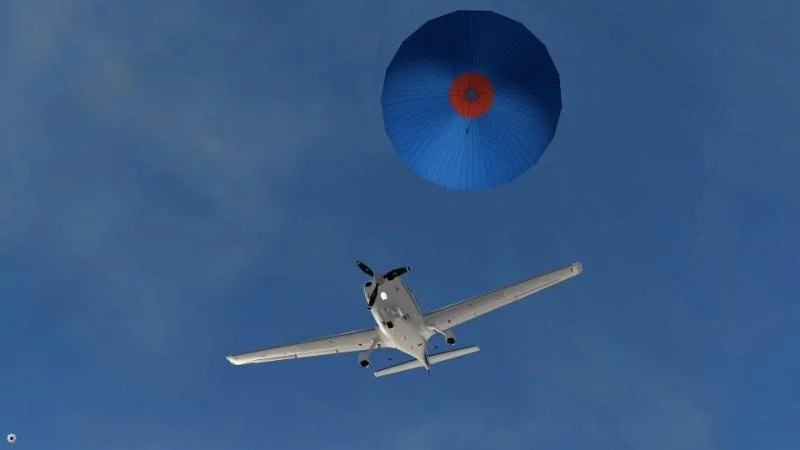
The Cirrus Parachute System
-

Every single Cirrus ever made has a parachute. It was the brainchild of Dale Klapmeier who was involved in a midair collision and survived. He went on to create the Cirrus line of aircraft with his brother. They wanted to create the safest piston single on the market and they have succeeded. The fatality rate of the Cirrus fleet is now less than that of the GA fleet.
There are many uses for the parachute.
• VFR into IMC
• Engine Failures
• Loss of Control
-

A common myth about the Cirrus aircraft is that it is unable to recover from a spin. Your instructor pilot should be the first line of defense in spin prevention so please train often!
Modern production airplanes are, in general, not tested or certified for spins. Aerobatic designs such as Extra and Sukhoi products are, of course, tested and certified for spins – but mainstream general aviation four-seat designs such as Cirrus, Cessna (182, 350/400), Diamond, Piper etc. are not certified for spins. Few 4-seat designs have ever been certified for spins.
All Cirrus aircraft have a spin resistant wing that can, in fact, enter and recover from a spin. In the event that one does get into a spin, the safer way to recover from a spin is to activate the parachute (CAPS). When was the last time you actually entered a spin and practiced the recovery? In a spin? Pull the chute.
From the Cirrus Owners Website www.cirrusowners.org: ".....When activated higher than 1000 feet above the ground and at an airspeed slower than Vne of 200 knots -- NO ONE HAS DIED!"
For a detailed look at CAPS, see Cirrus Aircraft’s in-depth explanation.

